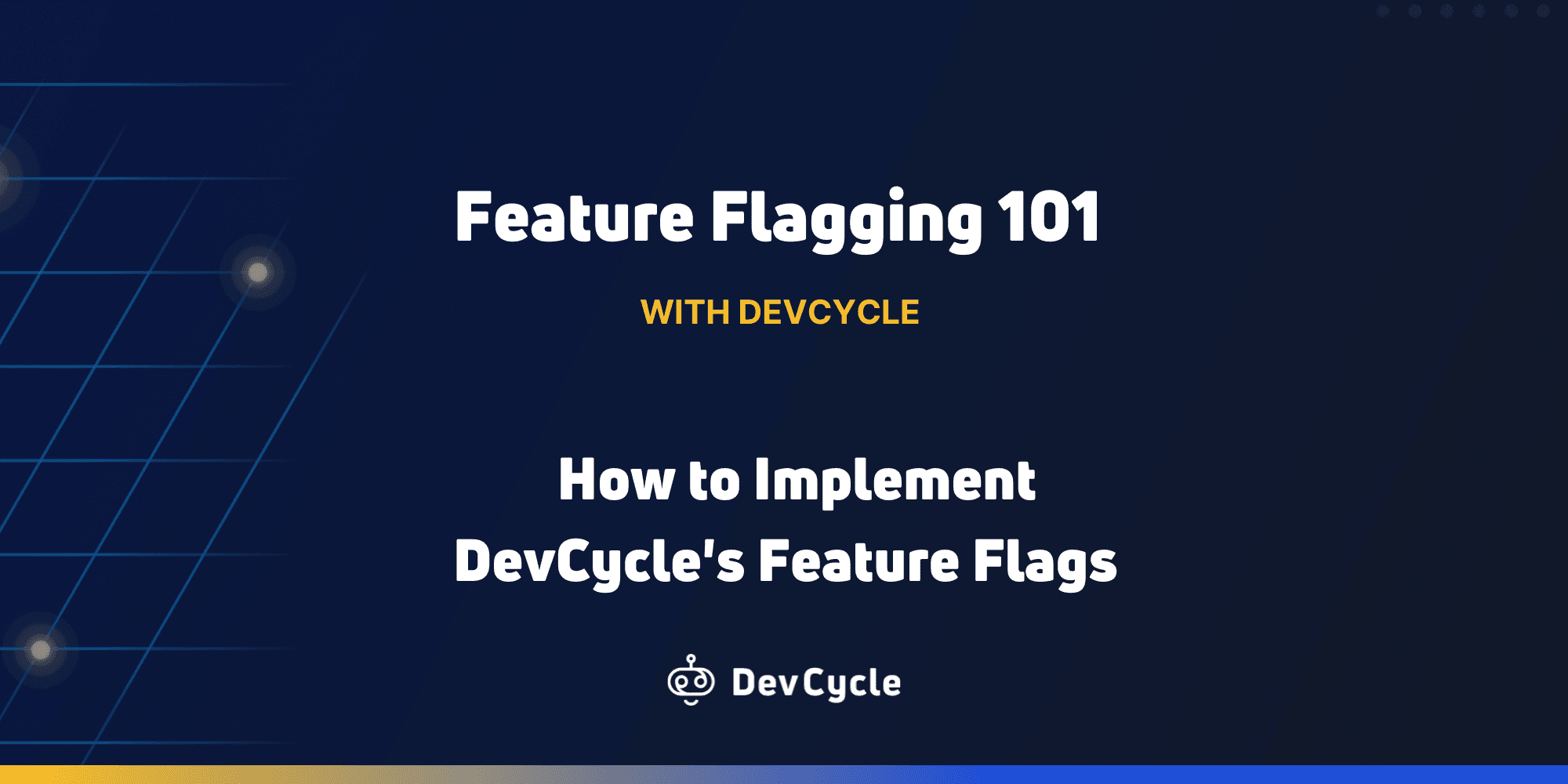
Feature Flagging 101: How to Implement DevCycle's Feature Flags
Madison Maher
7/16/2023
How to create your first feature flag using DevCycle
We’re nearing the end of May, which means our Feature Flagging 101 blog series is coming to an end! Now that we’ve covered all of the basics of feature flags, here’s a guide that’ll show you how to actually get started with DevCycle’s feature flags in your own engineering organization. We’ll walk you through everything from creating your first feature, to installing your SDKs, and even tracking your feature’s performance to iterate as needed.
Getting started is so simple, you’ll be feature flagging by the end of this article.
Step 1: Set up your account
The first step to getting started with feature flags is to sign up for a DevCycle account and create your organization.
Take a look at our pricing plans, and choose the one that best meets your needs. (Note: if you’re just trying out feature flags for the first time, we have an always-free option that will meet very basic feature flagging needs.)
You should also invite any team members you plan to add to your organization at this point so that everyone can get started at once. Remember, DevCycle doesn’t have seat-based pricing. We have usage-based pricing. This means you can invite as many team members as you want, and still pay less.
Step 2: Create your first feature
Once your account is set up, you can create your first feature flag within DevCycle’s dashboard. (Yes, even before you install an SDK. That part comes next. Trust us.)
To create your first feature, head to our dashboard and click the “Create New Feature” button. You’ll then be prompted to choose a feature type before naming your feature and defining a unique feature key and variable type:
For the feature name, be descriptive. (If one of your team members reads the name, they should be able to tell exactly what that feature does.)
The feature key is how your feature and its variables will be referenced in code. (A key will be automatically suggested based on the name you entered 👍)
Optionally, you can change the key of the initial variable to be different from the feature key.
The initial variable type allows you to select the type of variable for the initial created along with your feature (Boolean, JSON, String, or Number).
Once you’ve entered all your information for the feature, simply click “Create”

Step 3: Turn your feature on
When a feature is created in DevCycle, it’s automatically created across all environments that are defined in your project. Once you know how the feature should be managed in each environment and who it should target, you can turn the feature on for the environment you wish.

Step 4: Set up your SDK
You should read our docs for a full step-by-step guide on how to install and set up your SDK, but here’s a summary:
Once you’ve chosen your preferred SDK, you should install it via the relevant dependency manager. You should then import DevCycle and initialize the SDK in the correct environment.
Now, you should be able to access the feature you created and ensure the SDK was installed properly. Note:: the easiest way to ensure a proper SDK setup is to first set up a feature flag on the DevCycle dashboard. This is why we recommended you set up your first feature in the previous step. Now, you can access that feature with the SDK after it is installed.
PS: Check out all of our integrations here, too.
Congrats, you’ve created your first feature!
Of course, there are lots of other things you can do with features and their variables once you’ve created them. But for today’s purpose of helping you implement DevCycle and create your first feature, we’re keeping it simple.
You can check out our docs for next steps on managing your variables and variations of a feature. You can also check out our feature flagging use cases for more information on all the super cool things you can do with feature flags once you’ve implemented DevCycle.
Ready to get started?
Create your free account today at app.devcycle.com.
Written By
Madison Maher